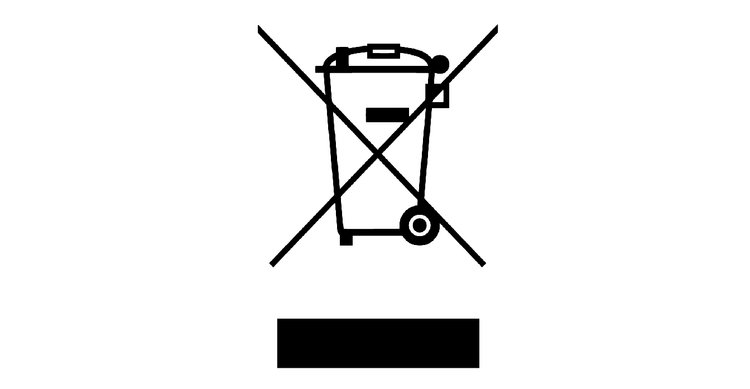MoTeC's unique M1 technology redefines the meaning of customisation, delivering total control without compromise, while highly advanced security strategies make these ECUs ideal for both category managed and unrestricted applications.
The

MoTeC's unique M1 technology redefines the meaning of customisation, delivering total control without compromise, while highly advanced security strategies make these ECUs ideal for both category managed and unrestricted applications.
The
At the time of purchase, an
An M1 Package is the file that is loaded into an
Targeted Packages
These are Packages specifically developed in-house by MoTeC engineers for a particular engine or vehicle. In some cases this includes integration with vehicle control systems beyond the engine, for example, stability control and cruise control.
For some targeted applications, the
These are Packages developed in-house by MoTeC engineers written specifically for the category, limiting the functionality to the class requirements.
Maximum current on outputs:
Low Side Injector outputs: max 3.5A, RMS 2A
Half Bridge outputs: Low Side 12A, High Side 9A, RMS 4A
IP rating is dependant upon the user ensuring that the connector entries are waterproof, which, as a minimum, requires all unused wire cavities on the connector to be plugged.
For a detailed description of the I/O refer to the "MCM112 Hardware Tech note".
The M1's advanced security system is based on public-key cryptography - the cornerstone of secure internet transactions - so it is virtually impossible to change the ECU function without authorised permission. Security is enforced by the ECU and protected by a microprocessor with integrated measures to prevent tampering.
A password feature grants different levels of access for different users, e.g. an engine tuner, a drive train tuner and a data analysis engineer. This is also suitable for Control ECU applications. Scrutineering teams can be given access to extra information and are able to lock down selected parts of the ECU, while other team members can be granted access to selected tuning parameters.
There are three Logging Licence levels. The level determines the number of channels and sample rates available. Logging Level 1 Licence is diagnostic logging, which comes standard with the product, and includes a fixed log set and sample rates.
Logging Level 3 Licence: includes 8 log sets, up to 2000 channels (including Level 1 diagnostics logging) and a maximum 1000 Hz sample rate.
The Pro Analysis upgrade is the professional version of MoTeC's i2 data analysis software and provides advanced mathematics, multiple overlay laps, and unlimited components, workbooks and worksheets.
Microsoft Windows™ based software:
User communication with the ECU requires an Ethernet connection. A cable providing an Ethernet plug and suitable pin termination for the M1 mating connector can be purchased from MoTeC Dealers.
Voltage range: -18V to 18V
Maximum current on outputs:
Battery
Depending on the current draw for some outputs, a minimum wire gauge is recommended for safe operation:
| Pin Number | Designation | Full Name | Function |
|---|---|---|---|
| BK_A1 | OUT_LS1 | Low Side Output 1 | |
| BK_A2 | OUT_LS_STB1 | Standby Low Side Output 1 | |
| BK_A3 | OUT_LS_STB2 | Standby Low Side Output 2 | |
| BK_A4 | OUT_LS2 | Low Side Output 2 | |
| BK_B1 | OUT_INJ8 | Injector Output 8 | |
| BK_B4 | OUT_LS3 | Low Side Output 3 | |
| BK_C1 | OUT_INJ7 | Injector Output 7 | |
| BK_C4 | IN_DE1 | Enhanced Digital Input 1 | |
| BK_D1 | OUT_INJ2 | Injector Output 2 | |
| BK_D3 | IN_AD1 | Analogue Digital Input 1 | |
| BK_D4 | SEN_0V_D | Sensor 0V D | |
| BK_E1 | OUT_INJ5 | Injector Output 5 | |
| BK_E2 | OUT_LS4 | Low Side Output 4 | |
| BK_F1 | OUT_INJ4 | Injector Output 4 | |
| BK_F2 | OUT_INJ6 | Injector Output 6 | |
| BK_F3 | OUT_INJ1 | Injector Output 1 | |
| BK_F4 | OUT_INJ3 | Injector Output 3 | |
| BK_G1 | OUT_LS5 | Low Side Output 5 | |
| BK_G2 | IN_DE2 | Enhanced Digital Input 2 | |
| BK_G3 | GND | Ground | |
| BK_G4 | OUT_LS6 | Low Side Output 6 | |
| BK_H1 | OUT_IGN1 | Ignition Output 1 | |
| BK_H2 | OUT_IGN2 | Ignition Output 2 | |
| BK_H3 | OUT_IGN3 | Ignition Output 3 | |
| BK_H4 | OUT_IGN4 | Ignition Output 4 |
| Pin Number | Designation | Full Name | Function |
|---|---|---|---|
| BN_B1 | OUT_AC1_C | Analogue Current Output 1.Current | |
| BN_B2 | OUT_AC1_V | Analogue Current Output 1.Voltage | |
| BN_B3 | SEN_0V_E | Sensor 0V E | |
| BN_C1 | IN_A1 | Analogue Input 1 | |
| BN_C2 | IN_A2 | Analogue Input 2 | |
| BN_C3 | IN_AL1 | Analogue Lambda Input 1 | |
| BN_D1 | IN_A3 | Analogue Input 3 | |
| BN_D2 | IN_ADU5 | Analogue Digital Pullup 5 | |
| BN_D3 | IN_A4 | Analogue Input 4 | |
| BN_D4 | IN_ADU2 | Analogue Digital Pullup 2 | |
| BN_E1 | IN_ADU4 | Analogue Digital Pullup 4 | |
| BN_E2 | IN_ADU3 | Analogue Digital Pullup 3 | |
| BN_E3 | OUT_LS7 | Low Side Output 7 | |
| BN_E4 | IN_DE3 | Enhanced Digital Input 3 | |
| BN_F1 | CAN1_LO | CAN Bus 1 Low | |
| BN_F2 | CAN1_HI | CAN Bus 1 High | |
| BN_G1 | CAN2_LO | CAN Bus 2 Low | |
| BN_G2 | CAN2_HI | CAN Bus 2 High | |
| BN_G3 | IN_DE4 | Enhanced Digital Input 4 | |
| BN_H1 | CAN3_LO | CAN Bus 3 Low | |
| BN_H2 | CAN3_HI | CAN Bus 3 High | |
| BN_H4 | IN_A5 | Analogue Input 5 | |
| BN_J1 | IN_A6 | Analogue Input 6 | |
| BN_J2 | IN_A7 | Analogue Input 7 | |
| BN_J4 | IN_A8 | Analogue Input 8 | |
| BN_K1 | IN_A9 | Analogue Input 9 | |
| BN_K2 | IN_A10 | Analogue Input 10 | |
| BN_K3 | IN_A11 | Analogue Input 11 | |
| BN_K4 | IN_DE5 | Enhanced Digital Input 5 | |
| BN_L1 | OUT_PLS2 | Power Low Side Output 2 | |
| BN_L2 | IN_ADU1 | Analogue Digital Pullup 1 | |
| BN_L3 | OUT_LS8 | Low Side Output 8 | |
| BN_M4 | OUT_LS_STB3 | Standby Low Side Output 3 |
| Pin Number | Designation | Full Name | Function |
|---|---|---|---|
| GY_A1 | IN_A12 | Analogue Input 12 | |
| GY_A2 | IN_AD2 | Analogue Digital Input 2 | |
| GY_A3 | OUT_LS9 | Low Side Output 9 | |
| GY_A4 | PWR_STB | Standby Power | |
| GY_B1 | IN_ADU6 | Analogue Digital Pullup 6 | |
| GY_B2 | IN_AUC2 | Analogue Current Pullup 2 | |
| GY_B3 | IN_A13 | Analogue Input 13 | |
| GY_B4 | IN_A14 | Analogue Input 14 | |
| GY_C1 | IN_D_STB1 | Standby Digital Input 1 | |
| GY_C2 | IN_D_STB2 | Standby Digital Input 2 | |
| GY_C3 | IN_D_STB3 | Standby Digital Input 3 | |
| GY_C4 | IN_AUC1 | Analogue Current Pullup 1 | |
| GY_D1 | OUT_LS10 | Low Side Output 10 | |
| GY_D2 | IN_A15 | Analogue Input 15 | |
| GY_E1 | SEN_0V_A | Sensor 0V A | |
| GY_E2 | SEN_0V_C | Sensor 0V C | |
| GY_E3 | SEN_0V_B | Sensor 0V B | |
| GY_E4 | SEN_5V_B | Sensor 5V B | |
| GY_F1 | SEN_5V_A | Sensor 5V A | |
| GY_F2 | SEN_5V_C | Sensor 5V C | |
| GY_F3 | OUT_LS11 | Low Side Output 11 | |
| GY_F4 | OUT_PLS1 | Power Low Side Output 1 | |
| GY_G1 | GND | Ground | |
| GY_G2 | GND | Ground | |
| GY_G3 | PWR | Power | |
| GY_G4 | PWR | Power | |
| GY_H1 | OUT_HB1 | Half Bridge Output 1 | |
| GY_H2 | OUT_HB2 | Half Bridge Output 2 | |
| GY_H3 | OUT_HB3 | Half Bridge Output 3 | |
| GY_H4 | OUT_HB4 | Half Bridge Output 4 |
| Pin Number | Designation | Full Name | OE Pin | Function |
|---|---|---|---|---|
| X_1 | SEN_0V_F | Sensor 0V F | ||
| X_2 | OUT_INJ9 | Injector Output 9 | ||
| X_3 | OUT_INJ10 | Injector Output 10 | ||
| X_4 | OUT_INJ11 | Injector Output 11 | ||
| X_5 | OUT_INJ12 | Injector Output 12 | ||
| X_6 | OUT_INJ13 | Injector Output 13 | ||
| X_7 | OUT_INJ14 | Injector Output 14 | ||
| X_8 | OUT_INJ15 | Injector Output 15 | ||
| X_9 | OUT_INJ16 | Injector Output 16 | ||
| X_10 | IO_PWR | Power In Out | ||
| X_11 | IN_A16 | Analogue Input 16 | ||
| X_12 | IN_A17 | Analogue Input 17 | ||
| X_13 | IN_ADU7 | Analogue Digital Pullup 7 | ||
| X_14 | IN_ADU8 | Analogue Digital Pullup 8 | ||
| X_15 | IN_AW2 | Wideband Analogue Input 2 | ||
| X_16 | IN_AW3 | Wideband Analogue Input 3 | ||
| X_17 | IN_AW4 | Wideband Analogue Input 4 | ||
| X_18 | IN_ADU9 | Analogue Digital Pullup 9 | ||
| X_19 | IN_ADU10 | Analogue Digital Pullup 10 | ||
| X_20 | SEN_0V_G | Sensor 0V G | ||
| X_21 | SEN_0V_H | Sensor 0V H | ||
| X_22 | SEN_5V_D | Sensor 5V D | ||
| X_23 | IN_AW1 | Wideband Analogue Input 1 | ||
| X_24 | CAN4_HI | CAN Bus 4 High | ||
| X_25 | CAN 4 LO | CAN Bus 4 Low | ||
| X_26 | IN_DE6 | Enhanced Digital Input 6 | ||
| X_27 | IN_DE7 | Enhanced Digital Input 7 | ||
| X_28 | IN_DE8 | Enhanced Digital Input 8 | ||
| X_29 | Not connected | |||
| X_30 | Not connected | |||
| X_31 | ETH_TX+ | Ethernet Transmit+ | ||
| X_32 | ETH_TX- | Ethernet Transmit- | ||
| X_33 | ETH_RX+ | Ethernet Receive+ | ||
| X_34 | ETH_RX- | Ethernet Receive- |
M1 ECUs are designed for use in a vehicle. As such, this product complies with the following standard:
This product is designed for an internal operating temperature range of -40 °C to 85 °C.
It should be installed in a location with sufficient air circulation and be shielded against thermal emissions from surrounding components.
This product is designed to withstand vibrations typical for normal vehicle installations.
This ECU must be installed in the same manner as the OE unit using the supplied rubber grommets and bushings.
Do not attempt to open and/or repair the device.
For repairs, contact and return the product via your local Authorised MoTeC Dealer.



This product should be disposed of in accordance with relevant national regulations for disposal of electronic waste. It does not contain hazardous materials which might be subject to specific materials regulations.
MoTeC Pty. Ltd.
If you are interested in purchasing this product contact an Authorised MoTeC Dealer.
This page shows the relevant downloads for this product. For a full selection of MoTeCs downloads visit the Downloads page.
To keep up-to-date with the latest webinars or software you can subscribe to our mailing lists and we will send you a message when new items are released.
To sign-up for a mailing list click the "SIGN-UP: WEBINAR NEWS" or "SIGN-UP: SOFTWARE RELEASE" button below.
